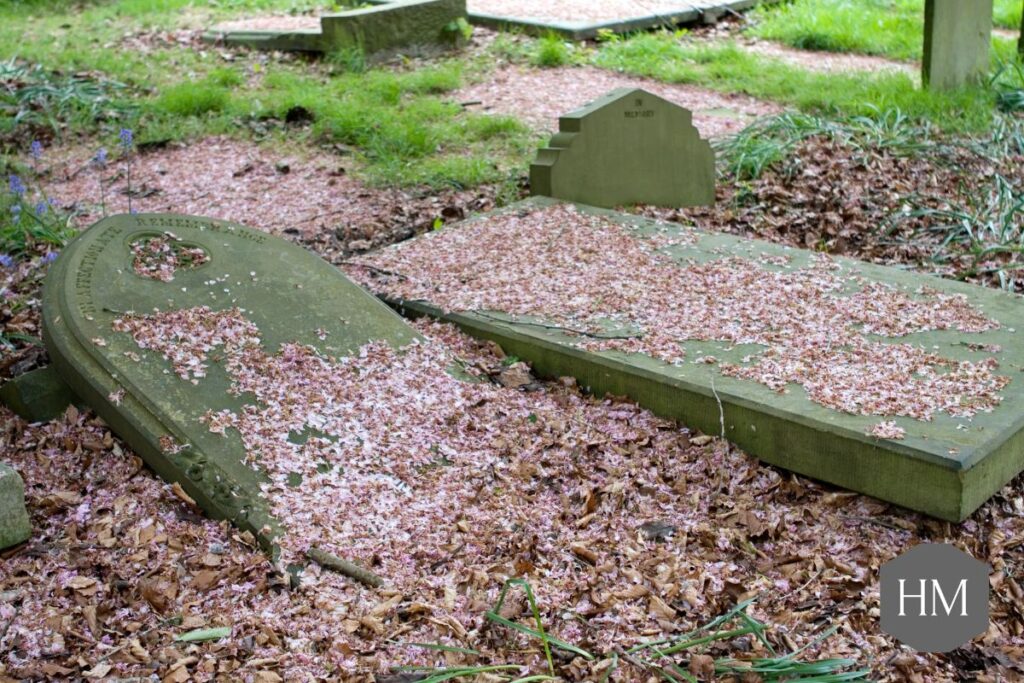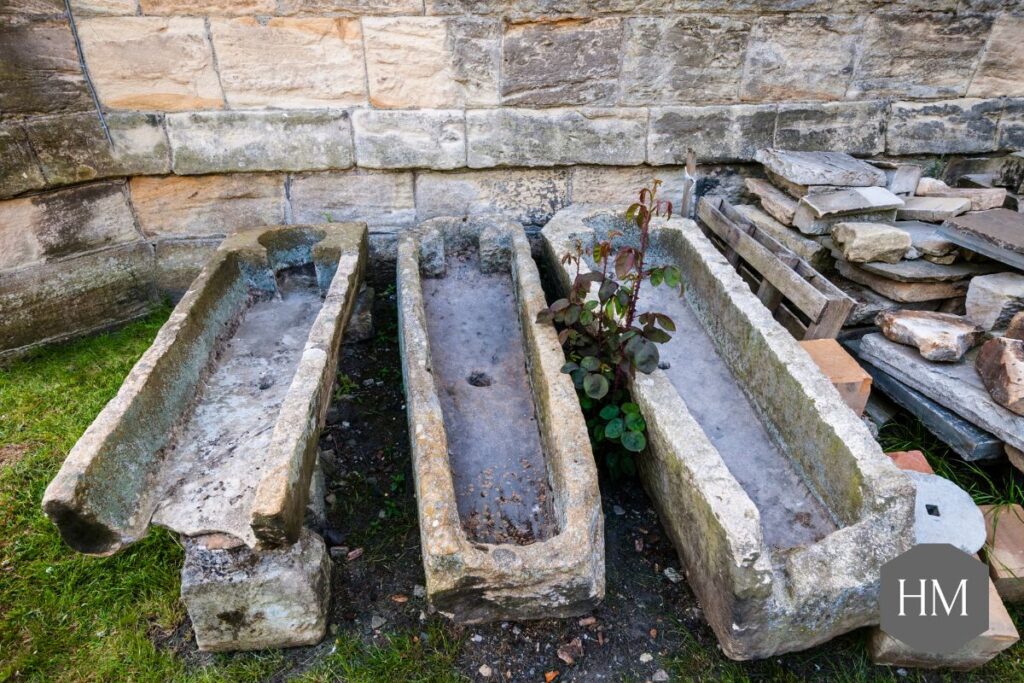When walking through the peaceful paths of a cemetery, you’ll encounter various stone markers standing as silent testaments to lives once lived. While these memorial markers may appear similar at first glance, they’re known by different names—headstones, gravestones, and tombstones—each carrying distinct historical and cultural significance.
Understanding the difference between these terms not only enriches your knowledge of funerary customs but also helps when choosing the perfect memorial headstone for your loved one. In this comprehensive guide, we explore the origins, evolution, and specific contexts in which each term is most accurately applied.
Quick Summary: Headstone vs Gravestone vs Tombstone
- Modern Usage: The words gravestone, tombstone, and headstone are now used interchangeably, but they originated at different times with distinct meanings
- Headstones: Typically upright memorial stones strategically placed at the head of a grave, bearing inscriptions that commemorate a life
- Gravestones: Historically larger than headstones, marking the full expanse of a grave with detailed inscriptions or images
- Tombstones: Originally larger stone slabs that marked and often covered entire graves, symbolising respect and ancestral connection
Understanding Memorial Marker Terminology
What is a Headstone?

A headstone is more than just a grave marker—it’s a personal tribute reflecting the unique life and legacy of the person it honours. Modern headstones serve as the most common form of cemetery memorial.
Key characteristics of headstones:
- Design: Typically an upright stone monument standing as a sentinel at the head of a grave
- Placement: Strategically positioned at the head to symbolise guidance and watchfulness
- Personalisation: Features custom inscriptions, dates, and often meaningful symbols or images
- Materials: Commonly crafted from granite, marble, or other durable stone materials
When choosing headstone materials, consider factors like durability, appearance, and local cemetery regulations.
What is a Gravestone?

A gravestone, often larger than a headstone, historically marked the full expanse of a grave and featured detailed inscriptions or images commemorating the departed. The term ‘gravestone’ reflects its traditional role in marking the entire resting place, not just the head area.
Historical gravestone features:
- Substantial stone slabs placed horizontally over burial plots
- Detailed engravings including names, dates, and epitaphs
- Ornamental symbols and decorative elements
- Complete grave coverage for protection and commemoration
Modern kerbed memorials serve a similar function to traditional gravestones, providing a defined memorial space.
What is a Tombstone?

Originally, the term “tombstone” referred to the stone cover of a stone coffin, dating back to the mid-16th century. Over time, tombstone evolved to describe vertical stones placed at grave heads, typically bearing the deceased’s name, birth and death dates, and sometimes epitaphs or portraits.
Evolution of tombstone meaning:
- Contemporary usage: Interchangeable with headstone in most contexts
- Original use: Stone coffin lids in the 1500s
- Modern definition: Upright grave markers with personal inscriptions
- Cultural significance: Symbol of respect and remembrance
Historical Origins and Etymology
The Origins of “Headstone” (circa 1400)
The term ‘headstone’ originated around 1400, initially as a synonym for “cornerstone”—a ceremonial stone positioned at building corners. These stones typically bore construction dates and relevant building information.
Historical progression:
- 1400s: Used to describe cornerstones in construction
- Late 17th century: Associated with grave markers
- 1775: Evolved to mean “upright stone at the head of a grave”
- Modern era: Most commonly used term for cemetery memorials
The Origins of “Gravestone” (1175-1225)
Gravestone’s etymology traces back to the 1300s, becoming widely used between 1175 and 1225, making it the term with the richest historical background. Originally, gravestones were substantial stone slabs placed horizontally over burial plots.
Key historical points:
- Earliest documented use in cemetery contexts
- Originally described horizontal stone coverings
- Featured inscriptions with names, dates, and epitaphs
- Significantly different from today’s upright markers
The Origins of “Tombstone” (mid-1500s)
The term ‘tombstone’ has Greek origins, derived from “tymbos” (burial mound) and “stia” (pebble). These words evolved into “tomb” and “stone” respectively, creating the term we know today.
Etymology timeline:
- Greek origins: “tymbos” + “stia”
- Mid-1500s: First English usage
- Original meaning: Stone coffin lid
- Evolution: Expanded to encompass upright grave markers
When to Use Each Term
Choosing “Headstone” for Your Memorial
Use ‘headstone’ when:
- Upright monuments: Selecting traditional vertical memorials at the grave’s head
- Personalisation focus: Wanting custom inscriptions with heartfelt messages and dates
- Modern context: Discussing contemporary cemetery memorials
- Professional settings: Working with memorial craftspeople or cemetery administrators
Headstone inscriptions can include names, dates, epitaphs, and meaningful symbols.
Using “Tombstone” for Traditional Appeal
Choose ‘tombstone’ when:
- Emphasising historical or traditional memorial aspects
- Connecting to heritage and memorial traditions
- Referencing old-world charm in cemetery contexts
- Discussing historical cemetery practices
Selecting “Gravestone” for Comprehensive Memorials
Use ‘gravestone’ when:
- Emphasising the marker’s role for the entire grave site
- Discussing horizontal memorial ledgers
- Referencing traditional burial practices
- Formal or literary contexts
For comprehensive grave memorials, consider kerbed memorials that define the entire burial space.
Modern Memorial Terminology and Industry Standards
Professional Usage in the Memorial Industry
While historically distinct, these terms are used interchangeably in contemporary language. Headstone has become the predominant term, particularly in the funeral industry and among memorial craftspeople.
Professional terminology:
- Cemetery administrators: “Headstone” or “memorial marker”
- Monument companies: “Headstones” and “memorials”
- Legal documents: “Grave markers” or “monuments”
- Insurance policies: “Memorial headstone insurance“
Specialised Memorial Types
Modern memorial options extend beyond traditional headstones:
- Cremation headstones: Designed specifically for cremated remains
- Children’s headstones: Thoughtfully designed for young lives
- World language memorials: Incorporating diverse cultural inscriptions
- Memorial ornamentation: Adding personal touches and symbolism
Caring for Your Memorial
Memorial Maintenance and Preservation
Proper care ensures your loved one’s memorial remains a fitting tribute for generations. Professional memorial restoration services can address weathering and damage over time.
Maintenance considerations:
- Regular cleaning: Learn how to clean a headstone properly
- Annual maintenance: Professional grave maintenance services
- Weather protection: Understanding material durability
- Insurance coverage: Protecting your investment with appropriate coverage
Memorial Accessories and Enhancements
Enhance your memorial with thoughtful additions:
- Memorial vases: For fresh flowers and tributes
- Individual monuments: Unique personalised memorials
- Cemetery memorials: Comprehensive memorial solutions
Planning Your Memorial: What to Consider
Inscription Planning
Thoughtful inscription planning creates a lasting tribute. Consider:
- Epitaphs for headstones: Meaningful phrases and quotes
- Memorial quotes: Inspirational and comforting words
- Beautiful words for gravestones: Concise, powerful messages
- What to write on a headstone: Comprehensive guidance
Practical Considerations
When planning a memorial, consider:
- Cemetery regulations: Understanding permitted styles and materials
- Budget planning: Balancing quality with affordability
- Timeline requirements: Installation scheduling and approval processes
- Future maintenance: Long-term care and preservation needs
Frequently Asked Questions
What is the purpose of a headstone?
A headstone serves multiple essential functions:
- Memorialisation: Creates a lasting tribute preserving memory for future generations
- Identification: Provides crucial information including names, dates, and family relationships
- Expression: Offers space for personal epitaphs reflecting personality or beliefs
- Connection: Serves as a gathering point for family and friends to remember and find comfort
Why is it called a headstone?
The term ‘headstone’ derives from its traditional placement at the head of a grave, symbolising the deceased’s resting place. This positioning creates a focal point for remembrance and provides a sense of orientation within the burial ground.
Is it a headstone, tombstone, or gravestone?
All three terms refer to memorial markers and can be used interchangeably in modern contexts. Your choice often reflects personal preference, cultural background, or family tradition. Whether you call it a headstone, gravestone, or tombstone, it serves the same fundamental purpose of honouring and remembering your loved one.
Why are tombstones called headstones?
Tombstones are often called headstones because they’re traditionally positioned at the head of the grave. This placement marks the resting place with names, dates, and personal tributes, creating a dignified memorial focus point.
What is the difference between a tombstone and a monument?
Tombstones typically mark individual graves, while monuments often signify larger memorials, sometimes for multiple family members or elaborate structures like mausoleums. Both celebrate lives and carry deep personal significance, but monuments generally encompass grander memorial structures.
What are tombstones called now?
Modern terminology commonly uses “headstones” or “gravestones” to describe cemetery memorials. These terms symbolise the enduring connection to loved ones who have passed and reflect contemporary memorial practices.
Conclusion: Choosing the Perfect Memorial
Understanding the distinctions between headstones, gravestones, and tombstones enriches your appreciation for memorial traditions and helps inform your choices when honouring a loved one. Whether you select an upright headstone, comprehensive gravestone, or traditional tombstone design, each carries the weight of memory and serves as a testament to a life lived.
At Haven Memorials, we create the perfect memorial to honour your loved one’s memory. Our experienced craftspeople understand the significance of these final tributes and work with families across the South of England and London to create meaningful, lasting memorials.
Ready to create a lasting tribute?
- Browse our memorial range: Explore headstones, cremation memorials, and specialty options
- Download our brochure: View our complete collection and services
- Contact our experts: Receive personalised guidance and support
Our compassionate team provides guidance through every step of the memorial process, ensuring your loved one’s final tribute reflects their unique life and your enduring love. From initial consultation through installation and ongoing care, we’re here to support you in creating a memorial that stands as a fitting testament to a cherished life.
